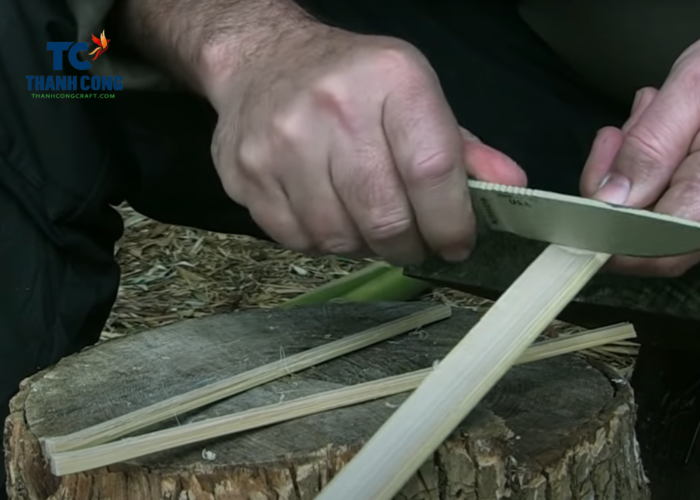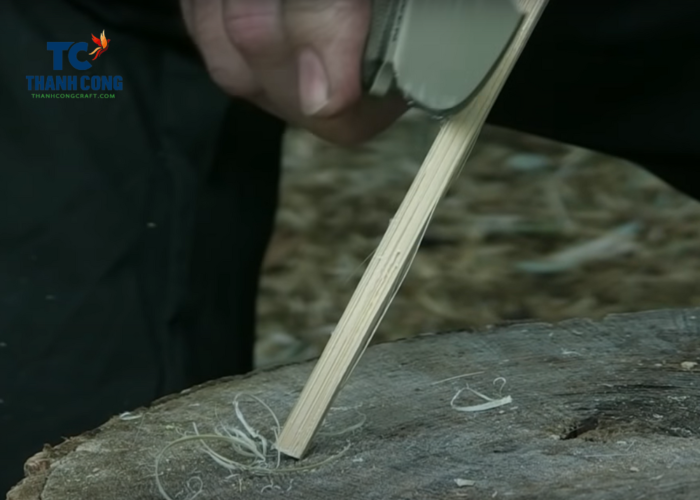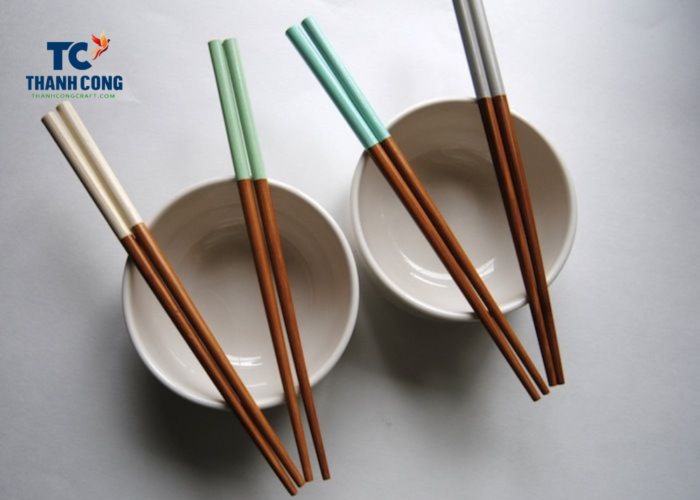Bamboo is a type of plant with a soft stem, easy to bend and has high durability, suitable for making chopsticks. Bamboo chopsticks are a familiar utensil in the meals of many Asian countries, such as Vietnam, China, Japan, Korea… They are not only convenient but also have cultural and spiritual meanings.
Do you know how to make bamboo chopsticks from bamboo tubes? Let’s follow the article below to learn how to make bamboo chopsticks in detail step by step.
Contents [hide]
1. How to make bamboo chopsticks?
Bamboo is a type of plant with a soft stem, easy to bend and has high durability, suitable for making chopsticks. To make bamboo chopsticks, you need to prepare the following materials and tools:
- Young bamboo, with a diameter of about 2-3 cm.
- Bamboo cutting knife, scissors, peeling knife.
- Saw, drill, sandpaper.
- Paint, tape, clean cloth.
Bamboo chopsticks are typically made through a process that involves harvesting, treating, shaping, and finishing. The steps to make bamboo chopsticks are as follows:
Step 1: Choose and cut the bamboo
You should choose young bamboo, not old and have a fresh green color. Cut the bamboo into pieces about 25-30 cm long, depending on the desired size of the chopsticks. Cut off the small branches and leaves.

Step 2: Peel and split the bamboo
Use a peeling knife to peel off the outer layer of the bamboo. Then, use a bamboo cutting knife to split each piece of bamboo into 4 equal parts. You will have triangular bamboo strips, about 0.5 cm thick.
Step 3: Round and sharpen the tip of the chopstick
Use a saw to cut off the edges of the bamboo strip, making it cylindrical. Then, use a drill to drill a small hole at the tip of the chopstick, then use scissors to cut off the excess and sharpen the tip of the chopstick. Finally, use sandpaper to smooth the surface of the chopstick.

Step 4: Decorate and preserve the chopsticks
You can paint or draw patterns on the body of the chopstick according to your preference. After the paint is dry, use tape to wrap around the tip of the chopstick, avoiding it from turning yellow when in contact with food. You should keep the chopsticks in plastic bags or boxes, and wash them after use.

2. FAQs
2.1 Are bamboo chopsticks sanitary?
Yes, bamboo chopsticks can be sanitary if properly cleaned and maintained. Like any utensil, it’s essential to follow proper hygiene practices to ensure that bamboo chopsticks remain safe for use. Here are some key points to consider:
- Cleaning: Wash bamboo chopsticks thoroughly with soap and hot water after each use. Pay attention to the areas where food may accumulate, such as the tips and between any grooves.
- Drying: Allow the chopsticks to air-dry completely before storing them. Proper drying helps prevent the growth of bacteria.
- Avoid Soaking: While bamboo is a durable material, it’s advisable to avoid prolonged soaking in water, as it may lead to warping or potential issues with sanitation.
- Periodic Inspection: Regularly inspect bamboo chopsticks for any signs of wear, cracks, or damage. If you notice any issues, it’s recommended to replace them.
2.2 Are bamboo chopsticks strong?
Yes, bamboo chopsticks are generally strong and durable. Bamboo is known for its natural strength and resilience, making it a suitable material for various applications. Bamboo has a high tensile strength, meaning it can withstand bending and tension, making it reliable for everyday use.
However, the strength of bamboo chopsticks can vary depending on factors such as the bamboo species, the age of the bamboo, and the manufacturing process. Choosing high-quality bamboo and proper processing techniques contribute to the overall strength and durability of the chopsticks.
2.3 Should you oil bamboo chopsticks?
Some people think that you should use cooking oil to rub on bamboo chopsticks to make them shiny and prevent cracking. However, this can harm your health because cooking oil can go rancid, creating a favorable environment for bacteria to grow. Moreover, cooking oil can also reduce the anti-slip ability of bamboo chopsticks, making it difficult for you to hold and use them.
Therefore, you should not use cooking oil to rub on bamboo chopsticks. Instead, you should wash bamboo chopsticks thoroughly with water and soap after each use, dry them and store them in a cool place. If bamboo chopsticks are cracked or moldy, you should replace them to ensure food hygiene safety.
2.4 What are bamboo chopsticks coated with?
Bamboo chopsticks may be coated with a variety of substances, and the coating depends on the manufacturer and the specific product. Here are some common coatings:
- Natural Oils: Some bamboo chopsticks are coated with natural oils, such as mineral oil or vegetable oil. These oils can enhance the appearance of the bamboo and provide a protective layer.
- Beeswax: Beeswax is a natural and food-safe substance used to coat bamboo chopsticks. It offers a protective layer, enhances the bamboo’s sheen, and may add a mild, natural fragrance.
- Shellac: Shellac, derived from the lac insect, is a natural resin that is sometimes used as a coating on bamboo chopsticks. It provides a glossy finish and offers protection.
- Lacquer: Chopsticks may be coated with lacquer, a clear or colored varnish. Lacquer provides a durable finish that protects the bamboo from moisture and wear.
- Polyurethane: Some bamboo chopsticks are coated with polyurethane, a synthetic material that forms a durable and water-resistant layer on the surface. Polyurethane coatings are often clear and glossy.
In conclusion, making bamboo chopsticks at home is a gratifying and eco-friendly endeavor, offering a personal touch to your dining experience. With a few simple materials and a step-by-step approach, you can create unique and sustainable utensils that showcase the natural beauty of bamboo.
If you have any further questions, don’t hesitate to send thanhcongcraft an email us at info@thanhcongcraft.com or message us at WhatsApp: +84967485411. Hope to serve you soon! Best regard!


